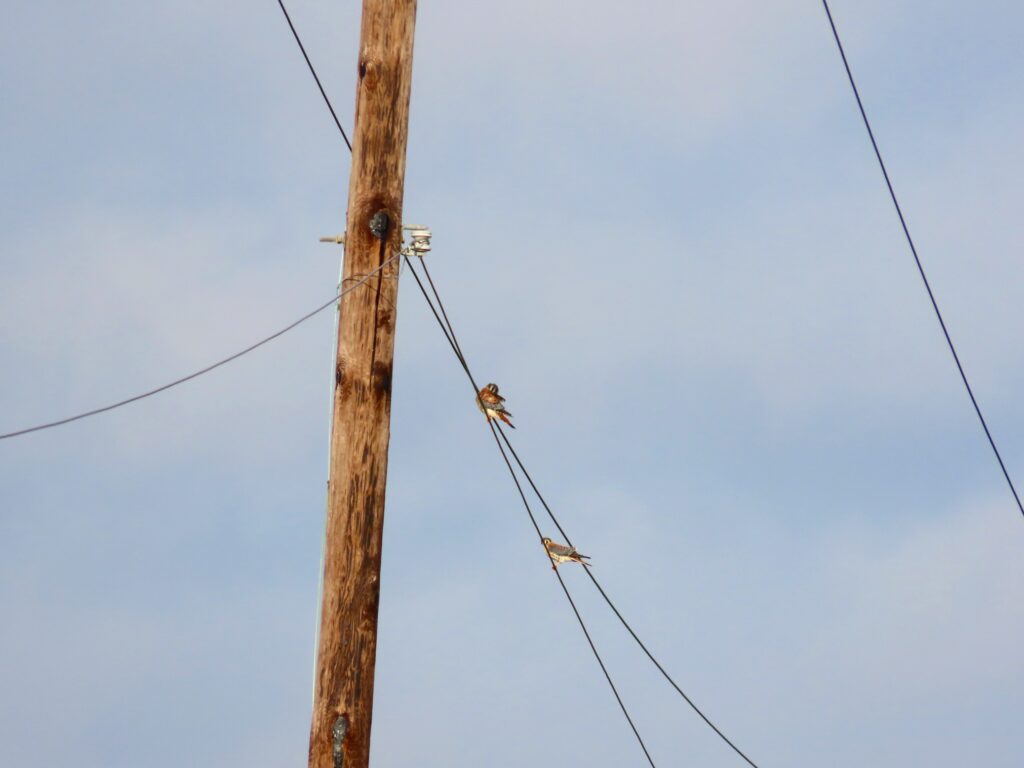




This week for Flora and Fauna Friday we have our smallest raptor, the American Kestrel (Falco sparverius).
The American Kestrel is the most petite of all our raptorial birds and a member of the Falcons. They only weigh a few ounces, are usually less than a foot in length, and are quite similar in size to a Mourning Dove or Blue Jay. Kestrels can be found year-round all across South Carolina. However, they are most common on Edisto Island in winter and most easily found in fields, pastures, and clear-cuts. American Kestrels are an easy bird to recognize. A pewter-gray cap, a short hooked bill, a wash of black running down from a large dark eyes around white cheeks, a rust-red mantle, a rust stained breast, golden-yellow legs, and a tail with a black and white fringe. Males and females have distinct patterns. Males have gray wings, an un-barred red tail, and black spots along their flanks. Females have wings checker-boarded in rusty reds and browns, thin bars across the tail, and vertical streaks down the breast.
Like all our Falcons, Kestrels are built for speed. They have relatively long, pointed wings, which allow them to fly and maneuver at very high speeds. They use this high-speed maneuvering to great effect while hunting. Kestrels subsist on a diet of large insects, small mammals, and songbirds. Their other common name, Sparrow-Hawks, was born from their skill at hunting sparrows. Kestrels hunt by perching atop a shrub, sapling, corn stalk, fencepost, power line, et cetera in a clearing and scanning their surroundings for movement. When prey is located, they swoop in to grab it off the ground, or out of mid-air if it tries to bolt. Although Kestrels rely on open habitats to hunt, they also depend on woodlands. Kestrels are cavity nesters and utilize old woodpecker holes in dead trees to build their nests. Kestrels will also use artificial nest boxes. In fact a Wood Duck Box, if mounted high enough, can serve as a suitable nest box for both Screech Owls and Kestrels. However, a slightly shorter box is usually preferred if your goal is to attract either of these two wee raptors.